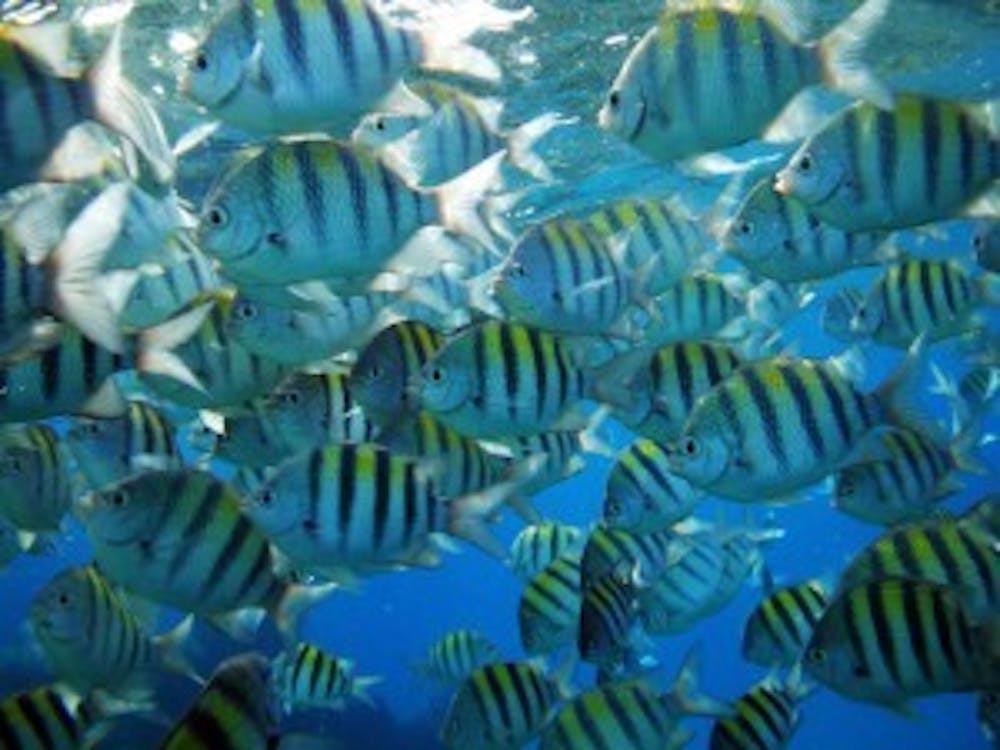Everyone knows that climate change caused by carbon emissions is harmful to the environment. It causes rising sea levels, loss of biodiversity, reduced agricultural yields, constrained water supply, unpredictable weather patterns and more. New research from the University of New South Wales (UNSW) in Australia indicates that there might be yet another consequence to worry about: drunken fish.
Researchers found that high levels of carbon dioxide in the ocean can lead to hypercapnia in fish, which causes symptoms similar to intoxication. Fish suffering from this condition become so disoriented that they cannot find food or avoid predators. The study, conducted by Ben McNeil and Tristan Sasse, was published in the journal Nature earlier this month.
“Our results were staggering and have massive implications for global fisheries and marine ecosystems across the planet,” McNeil, lead author of the study and part of the UNSW Climate Change Research Centre, said in a press release.
According to the research, if the atmospheric carbon dioxide level continues to rise at its current rate, marine creatures could experience hypercapnia in over half of the world’s oceans by the end of the century. In some areas, such as the Southern, Pacific and North Atlantic Oceans, consequences could be seen even earlier — by mid-century. This is much earlier than previously thought.
Aside from the potentially catastrophic effects on marine biodiversity, this could have serious impacts on fisheries, which sustain hundreds of millions of people, and already-endangered coral reefs. The effects will become severe when the atmospheric carbon dioxide concentration reaches 650 parts per million. Atmospheric carbon dioxide is currently just over 400 parts per million. In 1966, just 50 years ago, it was 320 parts per million.
The seawater carbon dioxide concentration data came from various ocean studies over the past 30 years and was analyzed by Sasse, who is part of the UNSW Department of Mathematics and Statistics. He found that the natural oscillations in seawater CO2 concentration will be amplified in specific areas as the atmospheric carbon dioxide concentration continues to rise.
“We devised a numerical method to work out the natural monthly peaks and troughs in carbon dioxide concentrations during the year across the surface of the world’s oceans, based on the observations,” Sasse said. “This allowed us to predict for the first time that these natural oscillations will be amplified by up to tenfold in some regions of the ocean by the end of the century.”
McNeil added that it is difficult to arrive at precise predictions regarding the occurrence of hypercapnia in the world’s oceans.
“Predicting the onset of hypercapnia is difficult due to a lack of global ocean measurements of carbon dioxide concentrations,” McNeil said.
That is why he and his colleagues are challenging other scientists to download the data set, come up with their own numerical methods for analyzing it and share the findings. In fact there is a competition underway. Those who are best able to analyze this data set can win $3,500 in cash prizes as well as the opportunity to be listed as a co-author on follow-up publications in Nature.
This competition is open to anyone, including students, until the end of April. Information about the competition and the original data set are available at thinkable.org. McNeil founded the site in 2013, along with Ernest Lie and Barry Jiao, for crowdfunding of innovative scientific endeavors.





